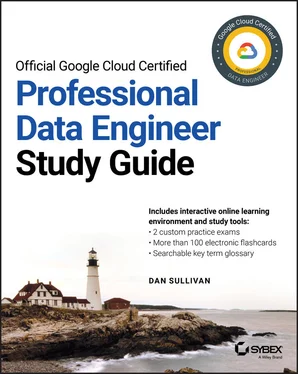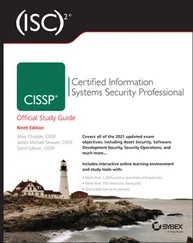Consider how long data will be stored when choosing a data store. Some data is transient. For example, data that is needed only temporarily by an application running on a Compute Engine instance could be stored on a local solid-state drive (SSD) on the instance. As long as the data can be lost when the instance shuts down, this could be a reasonable option.
Data is often needed longer than the lifetime of a virtual machine instance, so other options are better fits for those cases. Cloud Storage is a good option for long-term storage, especially if you can make use of storage lifecycle policies to migrate older data to Nearline or Coldline storage. For long-lived analytics data, Cloud Storage or BigQuery are good options, since the costs are similar.
 Nearline storage is used for data that is accessed less than once per 30 days. Coldline storage is used to store data accesses less than once per year.
Nearline storage is used for data that is accessed less than once per 30 days. Coldline storage is used to store data accesses less than once per year.
Data that is frequently accessed is often well suited for either relational or NoSQL databases. As data ages, it may not be as likely to be accessed. In those cases, data can be deleted or exported and archived. If the data is not likely to be used for other purposes, such as machine learning, and there are no regulations that require you to keep the older data, then deleting it may be the best option. In cases where the data can be useful for other purposes or you are required to retain data, then exporting and storing it in Cloud Storage is an option. Then, if the data needs to be accessed, it can be imported to the database and queried there.
During the process and analyze stage, data is transformed into forms that make the data readily available to ad hoc querying or other forms of analysis.
Transformations include data cleansing, which is the process of detecting erroneous data and correcting it. Some cleansing operations are based on the data type of expected data. For example, a column of data containing only numeric data should not have alphabetic characters in the column. The cleansing process could delete rows of data that have alphabetic characters in that column. It could alternatively keep the row and substitute another value, such as a zero, or treat the value as NULL.
In other cases, business logic is applied to determine incorrect data. Some business logic rules may be simple, such as that an order date cannot be earlier than the date that the business began accepting orders. An example of a more complex rule is not allowing an order total to be greater than the credit limit assigned to a customer.
The decision to keep the row or delete it will depend on the particular use case. A set of telemetry data arriving at one-minute intervals may include an invalid value. In that case, the invalid value may be dropped without significantly affecting hour-level aggregates. A customer order that violates a business rule, however, might be kept because orders are significant business events. In this case, the order should be processed by an exception-handling process.
Transformations also include normalizing or standardizing data. For example, an application may expect phone numbers in North America to include a three-digit area code. If a phone number is missing an area code, the area code can be looked up based on the associated address. In another case, an application may expect country names specified using the International Organization for Standardization (ISO) 3166 alpha-3 country code, in which case data specifying Canada would be changed to CAN.
Cloud Dataflow is well suited to transforming both stream and batch data. Once data has been transformed, it is available for analysis.
In the analyze stage, a variety of techniques may be used to extract useful information from data. Statistical techniques are often used with numeric data to do the following:
Describe characteristics of a dataset, such as a mean and standard deviation of the dataset.
Generate histograms to understand the distribution of values of an attribute.
Find correlations between variables, such as customer type and average revenue per sales order.
Make predictions using regression models, which allow you to estimate one attribute based on the value of another. In statistical terms, regression models generate predictions of a dependent variable based on the value of an independent variable.
Cluster subsets of a dataset into groups of similar entities. For example, a retail sales dataset may yield groups of customers who purchase similar types of products and spend similar amounts over time.
Text data can be analyzed as well using a variety of techniques. A simple example is counting the occurrences of each word in a text. A more complex example is extracting entities, such as names of persons, businesses, and locations, from a document.
Cloud Dataflow, Cloud Dataproc, BigQuery, and Cloud ML Engine are all useful for data analysis.
Often when working with new datasets, you’ll find it helpful to explore the data and test a hypothesis. Cloud Datalab, which is based on Jupyter Notebooks ( http://jupyter.org), is a GCP tool for exploring, analyzing, and visualizing data sets. Widely used data science and machine learning libraries, such as pandas, scikit-learn, and TensorFlow, can be used with Datalab. Analysts use Python or SQL to explore data in Cloud Datalab.
Google Data Studio is useful if you want tabular reports and basic charts. The drag-and-drop interface allows nonprogrammers to explore datasets without having to write code.
As you prepare for the Google Cloud Professional Data Engineer exam, keep in mind the four stages of the data lifecycle—ingestion, storage, process and analyze, and explore and visualize. They provide an organizing framework for understanding the broad context of data engineering and machine learning.
Technical Aspects of Data: Volume, Velocity, Variation, Access, and Security
GCP has a wide variety of data storage services. They are each designed to meet some use cases, but certainly not all of them. Earlier in the chapter, we considered data storage from a business perspective, and in this section, we will look into the more technical aspects of data storage. Some of the characteristics that you should keep in mind when choosing a storage technology are as follows:
The volume and velocity of data
Variation in structure
Data access patterns
Security requirements
Knowing one of these characteristics will not likely determine the single storage technology you should use. However, a single mismatch between the data requirements and a storage service’s features can be enough to eliminate that service from consideration.
Some storage services are designed to store large volumes of data, including petabyte scales, whereas others are limited to smaller volumes.
Cloud Storage is an example of the former. An individual item in Cloud Storage can be up to 5 TB, and there is no limit to the number of read or write operations. Cloud Bigtable, which is used for telemetry data and large-volume analytic applications, can store up to 8 TB per node when using hard disk drives, and it can store up to 2.5 TB per node when using SSDs. Each Bigtable instance can have up to 1,000 tables. BigQuery, the managed data warehouse and analytics database, has no limit on the number of tables in a dataset, and it may have up to 4,000 partitions per table. Persistent disks, which can be attached to Compute Engine instances, can store up to 64 TB.
Читать дальше

 Nearline storage is used for data that is accessed less than once per 30 days. Coldline storage is used to store data accesses less than once per year.
Nearline storage is used for data that is accessed less than once per 30 days. Coldline storage is used to store data accesses less than once per year.










